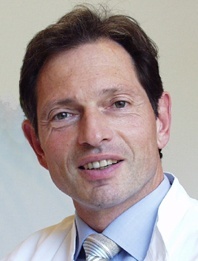Coronary heart disease
Germany is not following EU treatment guidelines, Anja Behringer reports
Bypass surgery figures declined again in 2010. Reason: Most coronary heart disease (CHD) patients are being treated by removal of the obstruction followed by stent implantation -- a situation criticised by Professor Jochen Cremer, first Vice President of the DGTHG (German Society for Thoracic and Cardiovascular Surgery).

‘The results of scientific studies confirm that this cannot be the right treatment for all patients. Particularly in cases of three vessel disease, the likelihood of dying within three years of being fitted with a stent is almost twice as high as after bypass surgery’, Prof Cremer said. For this reason, the European associations of cardiologists and cardiac surgeons have developed very precise guidelines for the treatment of coronary disease. These provide clear directions on which cases should receive stent implantation and which should have bypass surgery.
The guidelines also include the setting up of ‘heart teams’ comprised of cardiologists and heart surgeons, to ensure that each patient is given the best possible treatment based on a joint decision. A current survey carried out by the DGTHG of German cardiac surgery departments reveals that 80% of hospitals with cardiac surgery and cardiology departments hold so-called heart catheter conferences. However, in over 70% of hospitals both specialists do not jointly plan the best type of therapy for all patients but only for those who were scheduled for coronary bypass surgery. The cardiac teams envisaged by the European guidelines currently only exist in fewer than 14% of hospitals – and only 9% of hospitals now actually abide by the new European guidelines.
German heart surgeons carried out 122,000 procedures in 2010. Although this overall figure corresponds to the number of interventions carried out in the previous years, the average age of patients operated on increased significantly in 2010. More than half of all cardiac surgery patients last year were 70 years old and over; in 1994 only a quarter of all patients were in that age range.
The number of cardiac valve surgery interventions increased significantly in 2010 to 25,000. Of these, 11,689 were conventional operations to replace aortic valves and there were 3,600 transcatheter aortic valve implants. Thus, fewer than 25% of aortic valve interventions were carried out with the transcatheter method. ‘The clear advantage of this procedure is that it is a lot less stressful for the patient than surgery. However, not for no reason do the specialist heart surgeon and cardiologist associations only recommend this procedure for patients over the age of 75 who are also suffering from severe concomitant diseases,’ said Professor Friedrich Wilhelm Mohr, president of the DGTHG.
‘The mortality rate for conventional aortic valve surgery, depending on age and the patient’s general state of health, is between one and three percent. In the case of transcatheter implants, mortality rates of up to 7% have also been observed in younger, healthier patients,’ he pointed out. Therefore, he insistently appealed to all cardiologists and cardiac surgeons only to carry out transcatheter aortic valve implants jointly, and after thorough consideration of the treatment options. Prof. Mohr also mentioned the German Aortic Valve Register, a national log of all aortic valve interventions, inclusive of follow-up observation of patients over five years. The log was set up jointly by cardiologists and cardiac surgeons to enable them to make scientifically based, valid statements on the benefit of the procedures.
With a total of 5,341, last year also saw an increase in mitral valve interventions compared to the previous year. ‘In just under two thirds of interventions it is now possible to reconstruct a defective mitral valve. The likelihood of surviving this intervention is 98%,’ the professor said. However, if the mitral valve is beyond repair, a prosthetic heart valve must be fitted. This intervention particularly affects older patients weakened by concomitant disease, which is why the procedure shows a higher mortality rate.
Slight Heart transplants increase
In Germany, the number of heart transplants (HT) in 2010 increased slightly, to 379, whilst 2009 saw the lowest number so far since German reunification: 347 transplants. ‘However,’ Prof. Mohr pointed out, ‘this number is still unsatisfactory considering that the number of cardiac support systems increased from 479 in 2009 to 652 in 2010. As these cardiac support systems are not permanent, but interim solutions, the figures confirm that the need for donor hearts has increased further still.’
14.06.2011










